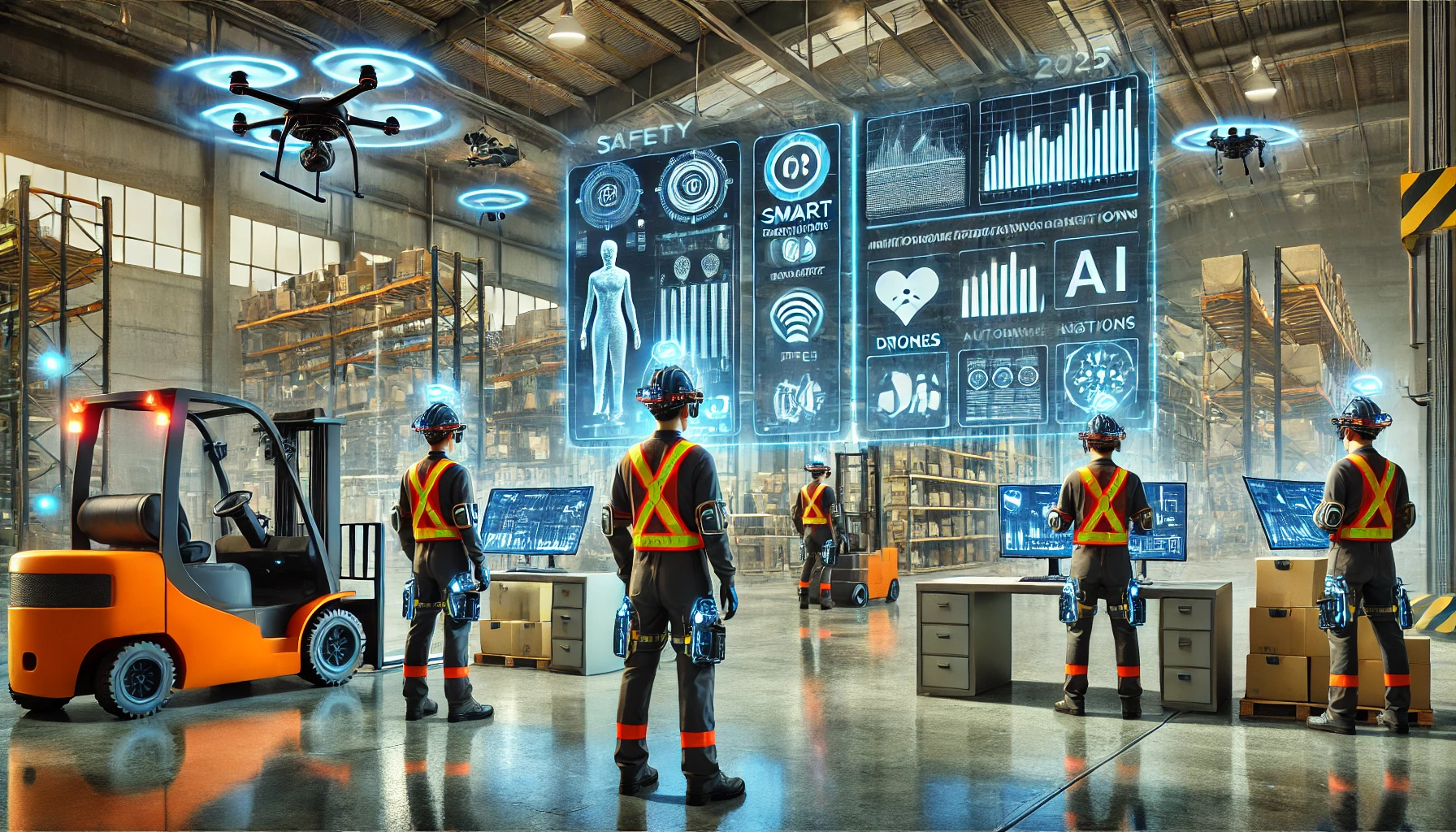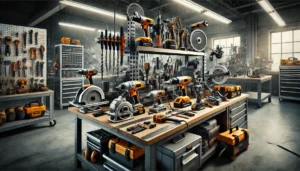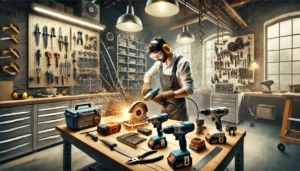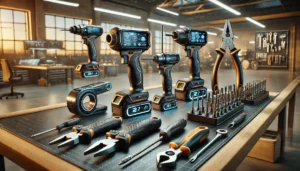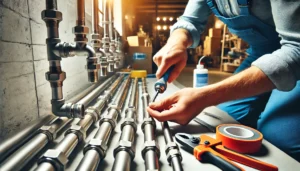Safety products are adopting new technologies in innovative designs that improve protection and its application in different fields. In 2025, safety products have notably changed from what they were. The newest updates have been targeted towards improving construction and public safety efficiency while diminishing risk factors.
Smart Personal Protective Equipment (PPE)
PPE has been revolutionized with the adoption of smart tech, enabling a new layer of protection for the PPE industry. Smart helmets, gloves, and vests are now equipped with sensors that monitor environmental conditions as well as the wearer’s bodily health statistics. For instance, smart helmets have the ability to overlay real-time data. Memorialization of safety instructions alongside conditions of the environment enhances awareness of the surrounding. Carryable health monitors record vital signs and are capable of warning workers and supervisors to impending conditions prior to reaching hazardous thresholds, such as excessive fatigue or severe heat levels. These foremost innovations improve safety practices but also help in preventing medical issues in the workplace.
Advanced Monitoring Systems
There has been the adoption of advanced monitoring systems that integrate sensors and apply areas such as analytics software with real-time dashboards. It has become widespread and commonplace. A few of the measures these systems take involve monitoring air quality, construction site noise level, and vibrations. These systematic approaches allow potential surprises to be caught before they escalate into problems giving the worker immediate active solutions to apply and enrich the overall safety level in the working environment.
Virtual and Augmented Reality (VR/AR) Training
The adoption of VR and AR technologies in training methods has changed how training is conducted. These technologies enable employees to perform dangerous activities in a controlled digital environment to minimize the risk of getting injured while performing real tasks. For example, VR simulations can put scenarios that pose dangers to employees which then enables them to learn how to respond to such situations without actually placing them in danger. AR may project important safety information onto real-world environments which may help employees perform complicated tasks safely.
AI Powered Predictive Safety Analytic
AI has transformed how predictive safety analytic technology works. AI algorithms are capable of scanning and studying historical data and real-time data with the possibility of detecting risks before they escalate into severe incidents. For example, in logistics, AI can observe the operations of forklifts and recognize danger signs, such as operator exhaustion or poor working practices. This approach to safety management makes it possible to prevent a great number of work incidents which increases overall safety.
Merging Ultra-Wideband With Real-Time Location Systems
The merger of UWB and RTLS technologies has made it possible to track workers and equipment within a workplace with high accuracy. The tracking systems provide access to real-time data concerning the whereabouts and activities of assets and people, which helps in streamlining workflow and quick response during emergencies. UWB can be used to monitor the movement of forklifts and personnel in the warehouses to reduce accidents and improve efficiency, for example.
Innovations In Technology for Public Safety
The intervention of AI-equipped drones and robots has brought new value to public safety. Drones with built-in AI offer real-time sight of the affected location, which helps in responding to disasters more effectively and allocating resources in more focused areas. Such technologies improve the work of emergency services by allowing faster and safer management of dangerous situations.
Advanced Solutions To Fire Safety
The adoption of smart smoke alarms that work with mobile phones to raise alerts to users has improved smoke evacuation. Some of them even allow setting up emergency contact calls and the notification of fire services to increase response time to fire risks. These devices are the new frontier in fire safety mitigation in homes and workplace premises.
Child Safety Innovations
In response to the issues posed by small batteries, new designs are being developed that integrate many safety mechanisms. For example, certain button batteries are now manufactured with child resistant designs, a coating that deters swallowing, and a blue indicator that is visible when the battery is damaged or swallowed. These mechanisms are supposed to ensure the safety of children while also aiding caregivers by giving them instant information regarding the child’s safety.
Advancements in Electric Vehicle (EV) Battery Safety
The automobile industry has been working on providing better safety measures for EV batteries which has resulted in the development of solid state batteries with less flammable, solid electrolytes. Furthermore, plastic components of the vehicle are being improved in design and shape so that they are able to take in more shocks during collisions These innovations are intended to help allay the fears that consumers have pertaining to the safety of electric vehicles and encourage more people to make the switch.
Innovative Disaster Response Tools
Fire and rescue services are considering new technologies like amphibian vehicles and drones for improving response time to disasters. These devices are very effective in difficult environments such as areas where there is heavy flooding and traditional vehicles cannot operate. The application of such technology is expected to enhance operational safety and efficiency in rescue operations.
Safeguarding Workplaces with Automatic Machine Leonardos
Automatic machine Leonardos are able to increase protection of workers in dangerous professions, which include building and production. In construction, for instance, the use of automation system integration is employed which has improved efficiency. With modern camera technology, Automatic machine Leonardos are developed for thorough and precise inspections of buildings, power plants or deserted hazardous locations, enabling professionals to eliminate many potential risks. Autonomous drone operated cameras, autonomous forklifts with robotic arms are all devices that have lowered the requirements of professional humans operating dangerous equipment, and so lowered the opportunity of dangerous occurrence of accidents at work.
Smart Tools for Solo Operators
Solo operators, or people who work in secluded areas that have minimum supervision, have their own set of safety measures. These operators are remotely supervised thanks to tools equipped with GPS, So much so that when a fall is detected, these wearables relay emergency communications. These aids are set to automatically alert the emergency responders when a mishap takes place. Such modern advances are especially important in oil and gas, forestry, and isolated construction sites.
AI-Driven Workplace Safety Compliance
A lot of companies are now using systems powered by artificial intelligence technology to help with safety compliance. Using computer vision technology, it’s possible to analyze videos in a working environment to check for safety compliance. For example, cameras can monitor employees’ adherence to various safety behavior protocols, such as wearing proper PPE, and other compliant actions. This system offers alerts and reporting functions which assist organizations in enhancing basic compliance, thus minimizing risk.
Conclusion
2025 brought a fresh wave of safety technologies around many industries. The use of modern technology in protection devices doesn’t only improve safety, but also increases efficiency and responsiveness in critical scenarios. The future of workplace and public safety is dependent on more sophisticated smart PPE, AI analytics, VR training, and even automation. These innovations are anticipated to help protect places of work, homes, and public areas. Employers and people need to keep up with new advanced safety devices and invest in the best technology to ensure safety and mitigate any risks.

